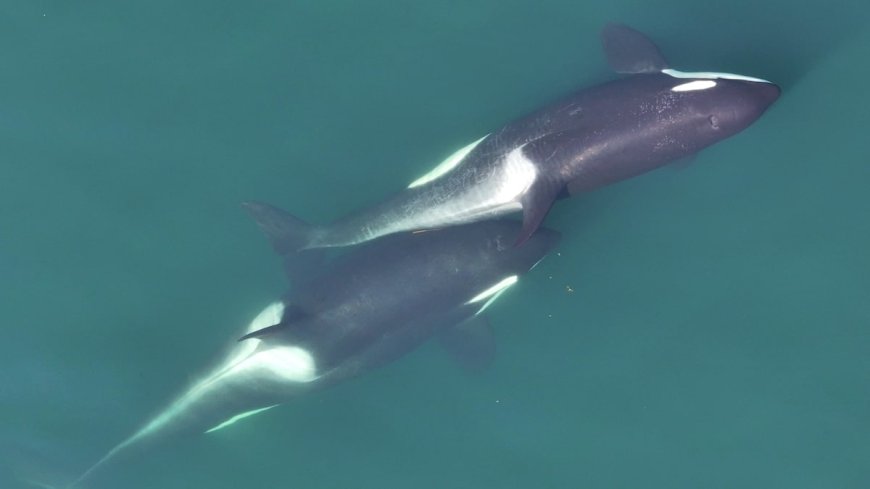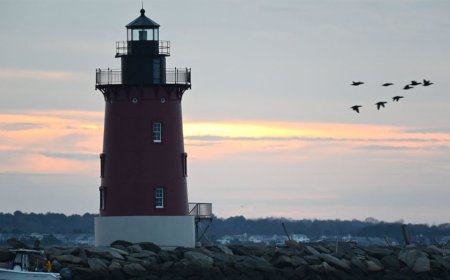Southern Resident Orcas Observed Grooming Each Other With Seaweed in First Documented Tool-Making by a Marine Mammal
Orca whales have been observed biting off lengths of kelp and using the strands to massage each other — the first known evidence of marine mammals making tools. A group of killer whales off the coast of the United States and Canada were seen removing the ends of seaweed stalks, putting them between their bodies […] The post Southern Resident Orcas Observed Grooming Each Other With Seaweed in First Documented Tool-Making by a Marine Mammal appeared first on EcoWatch.

Orca whales have been observed biting off lengths of kelp and using the strands to massage each other — the first known evidence of marine mammals making tools.
A group of killer whales off the coast of the United States and Canada were seen removing the ends of seaweed stalks, putting them between their bodies and rolling them for long periods, likely for play and to strengthen social bonds, and possibly to remove parasites or dead skill cells.
“We were amazed when we first noticed this behaviour,” said Dr. Michael Weiss, research director at the Center for Whale Research (CWR), in a press release from the University of Exeter.
Big news! Our latest paper, “Manufacture and use of allogrooming tools by wild killer whales” has been published in “Current Biology”. This is the first known evidence of a marine mammal making tools out of objects in their environment. Explore more here: www.sciencedirect.com/science/arti…
[image or embed]— Center for Whale Research (@whaleresearch.bsky.social) June 23, 2025 at 1:06 PM
Scientists spotted the unique behavior by southern resident killer whales of all ages in Washington State’s Salish Sea captured on drone footage.
The study was led by CWR in collaboration with researchers from the University of Exeter and Boston’s Northeastern University.
Several species of whales have been known to engage in “kelping,” which involves moving seaweed with their bodies, fins and head.
The new discovery — termed “allokelping,” or kelping with another whale — is unique since the kelp is chosen and trimmed to be used as a “tool” in the future and manipulated by a pair of whales working together.
“Bull kelp stalk is firm but flexible, like a filled garden hose, with a slippery outer surface. I suspect these features make it an ideal grooming tool,” Weiss said. “What I find remarkable about this behaviour is just how widespread it is in the population. Males and females of all life stages and from all three southern resident pods were seen using kelp in this way. All evidence points to it being an important part of their social lives.”
The research team observed the whales allokelping on eight of 12 days of the study. Based on the encounters, they suspect the behavior could be universal in the population.
Whales most often paired up to engage in allokelping with those of similar age, and close maternal relatives.
“This population of whales has been formally studied for 50 years – the best-studied orcas on the planet – and yet major new discoveries can still be made,” said Rachel John, a University of Exeter masters student of animal behavior, in the press release. “We hadn’t noticed ‘allokelping’ before because the videos being collected from our previous aircraft weren’t of high enough quality, but the footage we’re getting now shows this behaviour in great detail.”
Darren Croft, executive director of CWR and a professor of animal behavior at the University of Exeter, said touch is known to be important.
“In primates – including humans – touch moderates stress and helps to build relationships,” Croft explained. “We know killer whales often make contact with other members of their group – touching with their bodies and fins – but using kelp like this might enhance this experience. It might also be important for skin health. Whales and dolphins have a variety of strategies to help them slough dead skin, and this may be yet another adaptation for this purpose.”
Croft said bull kelp and other types of brown algae also have anti-inflammatory and antibacterial properties that could benefit the whales.
“We’re now working on more research to confirm these initial findings and investigate the social and skin health benefits of this behaviour,” Croft added.
Other species of killer whale have been known to rub against smooth stone beaches, but the southern residents had not been observed doing that.
“The Canadian government protects beaches where northern resident killer whales beach rub, and – with bull kelp declining due to warming water temperatures – similar protection might be needed for the southern residents,” the press release said.
As of July 2024, only 73 southern resident orcas remain — a critically low number, as the subspecies doesn’t interbreed with other populations of killer whales.
The southern resident orcas feed mostly on Chinook salmon, which have declined drastically because of overfishing, the destruction of spawning habitat — including dam building — and climate change. The whales have also been adversely impacted by pollution and noise produced by humans.
Weiss said the outlook for the whales is “very bleak” unless major changes happen fast.
“We’re not seeing the birth rate that’s required to sustain the population. Under the status quo, all of our projections indicate the population will continue to decline,” Weiss said. “They are struggling to find enough of the large, fatty Chinook salmon that they need to survive and successfully rear their young. We often think about biodiversity in terms of protecting the phenotypic variation we see in animal populations – such as differences in size, shape, and colour. However, conserving cultural and behavioural variation may be just as important. Allokelping is yet another piece of evidence of the southern residents’ uniqueness. If we lose them, we lose so much more than 73 individual animals or a genetic lineage. We lose a complex society and a deep, unique set of cultural traditions.”
Croft said the results highlight another potential threat to the southern resident orcas’ survival.
“[T]he kelp forests where they select their grooming tools are in decline due to rising ocean temperatures associated with global warming,” Croft said. “Protecting the future of these kelp forests, where the killer whales make their tools, may be important in preserving this unique culture and ensuring the southern resident killer whale population continues for generations to come.”
The findings of the study, “Manufacture and use of allogrooming tools by wild killer whales,” were published in the journal Current Biology.
The post Southern Resident Orcas Observed Grooming Each Other With Seaweed in First Documented Tool-Making by a Marine Mammal appeared first on EcoWatch.





















































